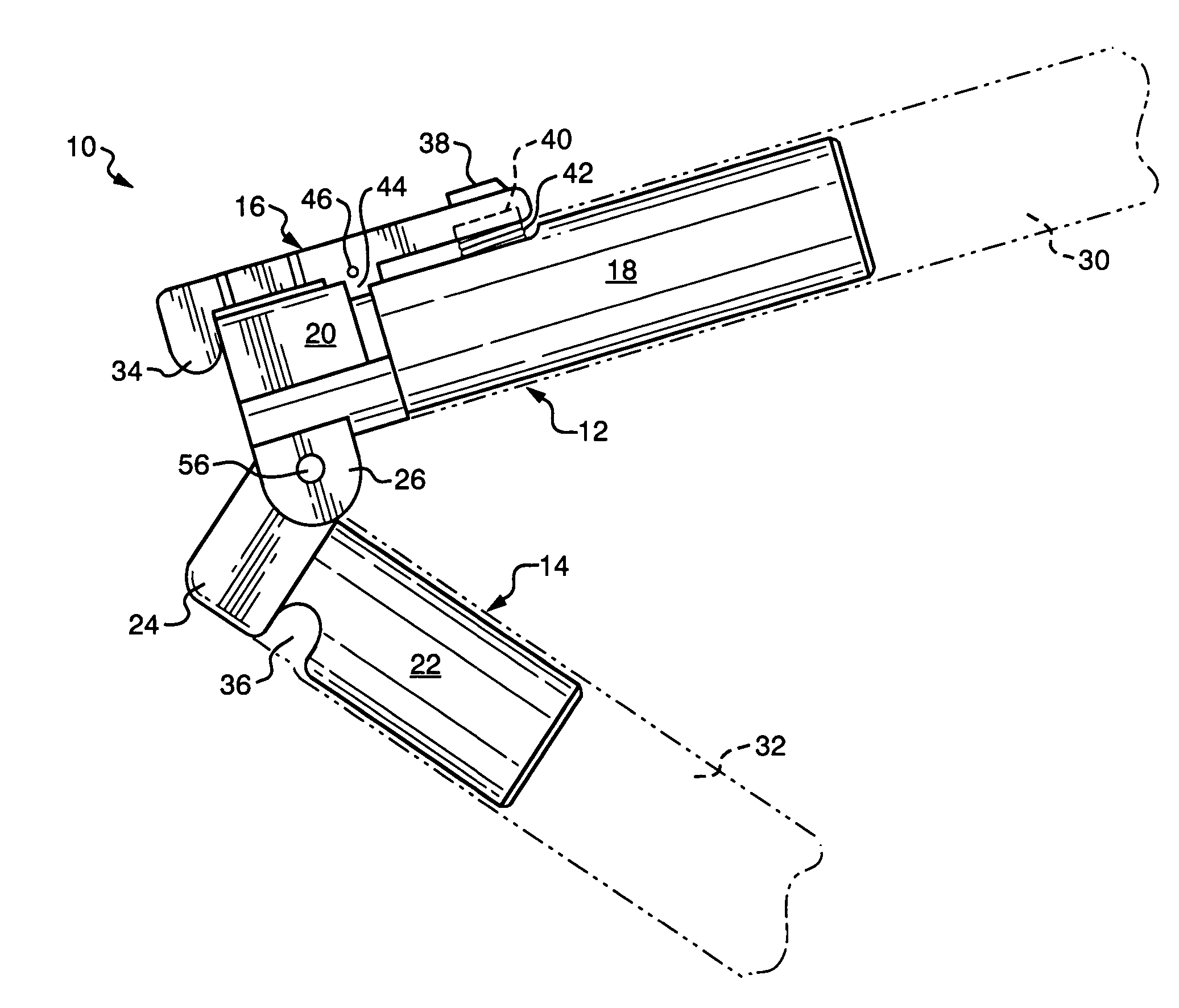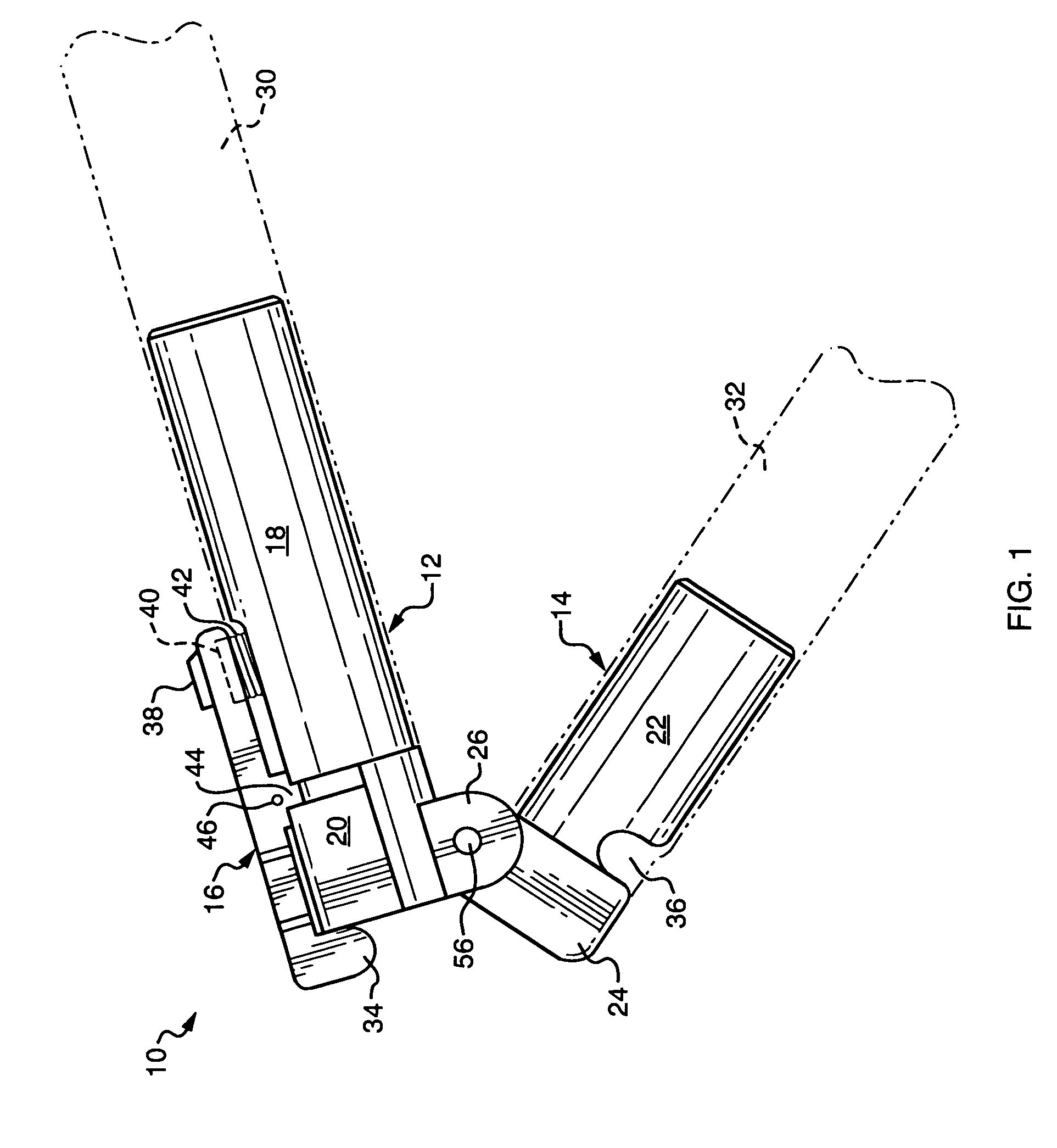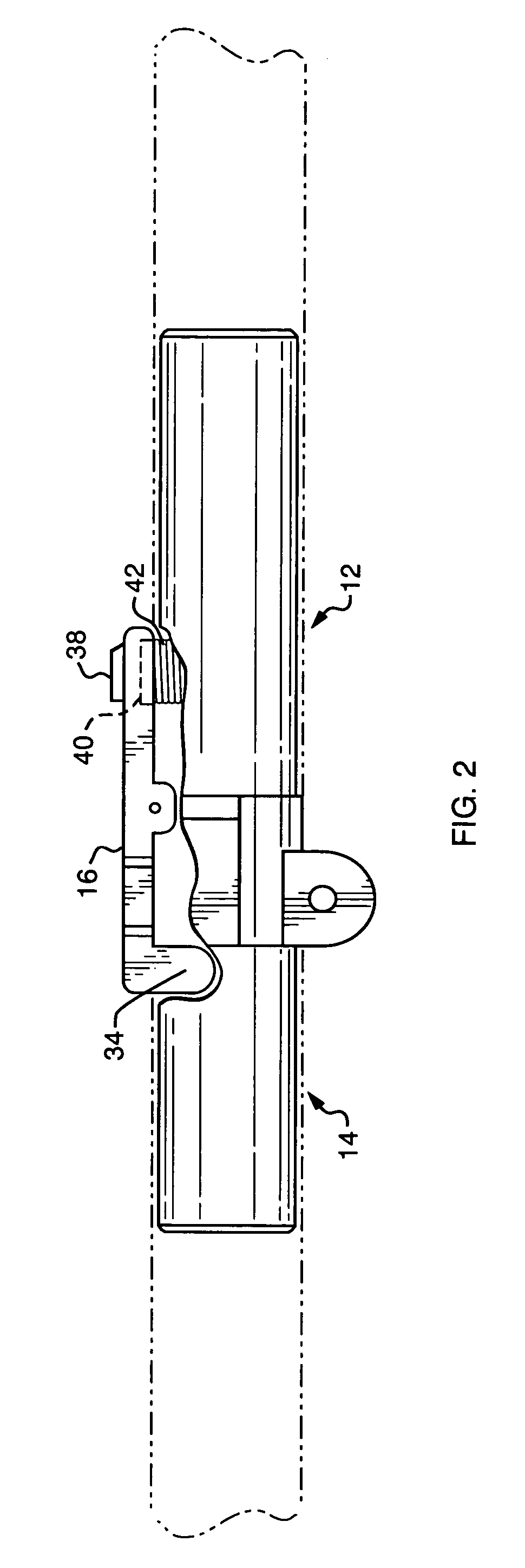Self locking hinge
a self-locking, hinge technology, applied in the field of folding hinges, can solve the problems of inability to incorporate all the novel aspects of the prior art, complicated and costly manufacturing, internal parts, etc., and achieve the effects of convenient transportation and storage, reduced pole size, and convenient and convenient transportation
- Summary
- Abstract
- Description
- Claims
- Application Information
AI Technical Summary
Benefits of technology
Problems solved by technology
Method used
Image
Examples
Embodiment Construction
[0025]Referring to the Figures and more specifically FIG. 1 and FIG. 3, the invention 10 consists of essentially three parts, a first hinge portion 12, a second hinge portion 14 and a self locking latch 16. Each hinge portion has a main body portion and a connecting portion containing lobes designed to connect the two hinge portions. The first hinge portion 12 has a main body portion 18 and a connecting portion 20 with two lobes 26 and 54. The second hinge portion 14 has a main body portion 22 and a connecting portion 24 with a single lobe 28. The main body portions of the hinge portions are design to allow the hinge portions to be engaged with poles or other devices. In FIG. 1, the main body portion 18 of first hinge portion 12 is disposed in pole 30 while the main body portion 22 of second hinge portion 14 is disposed in pole 32. The invention 10 can be made in a variety of geometric shapes so that it can be connected with variety of different shaped poles or devices requiring the...
PUM
 Login to View More
Login to View More Abstract
Description
Claims
Application Information
 Login to View More
Login to View More - R&D
- Intellectual Property
- Life Sciences
- Materials
- Tech Scout
- Unparalleled Data Quality
- Higher Quality Content
- 60% Fewer Hallucinations
Browse by: Latest US Patents, China's latest patents, Technical Efficacy Thesaurus, Application Domain, Technology Topic, Popular Technical Reports.
© 2025 PatSnap. All rights reserved.Legal|Privacy policy|Modern Slavery Act Transparency Statement|Sitemap|About US| Contact US: help@patsnap.com



